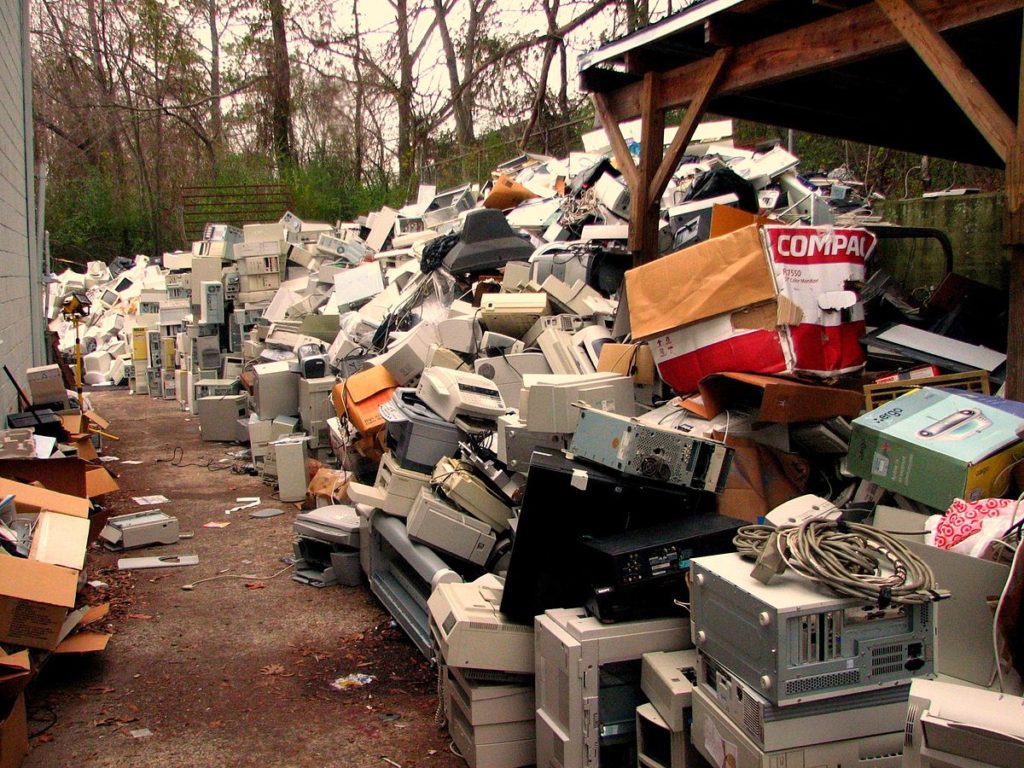The EU member states collect and recover more discarded electrical and electronic equipment than most of the world but risk missing more ambitious e-waste collection targets, according to a new review report published on Thursday by the European Court of Auditors (ECA).
E-waste – discarded electrical and electronic tools, household appliances and even large equipment such as photovoltaic panels – is harmful to the environment if it is not treated properly. E-waste also often contains recyclable materials such as metals and plastics. It can therefore contribute to the circular economy.
For instance, 1 tonne of smartphones contains about 100 times more gold than 1 tonne of gold ore.
The report points out out a number of challenges, such as the need to ensure and check compliance with the existing rules, and with the problem of breaches and criminal activities, such as illegal shipments to countries outside the EU.
“The collection and recovery of e-waste in the EU has improved over time, and the EU currently recycles about 80 % of the e-waste it collects,” said Joëlle Elvinger, the ECA member responsible for the review (20 May).
In 2016, member states had to achieve a minimum collection rate of 45 % of all e-waste, relative to the average weight of electrical and electronic equipment placed on the market in the preceding three years. Most member states reached the 45 % target and so did the EU as a whole. The collection rate has increased in recent years but in 2018 still more than 10 kg/capita of e-waste was not collected.
From 2019, member states must achieve a minimum collection rate of 65 % of all e-waste. For 10 member states (BG, CZ, LV, LT, HU, MT, PL, RO, SI and SK), the new target is applicable from August 2021 onwards. Only Bulgaria and Croatia appear to be on track to achieving the collection targets set for 2019, according to ECA.
Collection of e-waste through separated waste bins and dedicated collection points comes before recycling. On a more positive note, recovery targets are largely met with a recover rate of ca 90 % of all collected waste, of which more than 80 % is recycled and prepared for reuse.
Which member states lack resources to deal with e-waste and are responsible for illegal shipments of waste outside the EU? “We haven’t gathered such information for individual member states,” replied the audit team. According to the report, in 2017, 13 out of the then 28 member states, had no inspection plans covering both e-waste collection and treatment.
Nor is there any precise figure on the total amount of e-waste which is shipped illegally to non-EU countries. It was estimated in 2015 that member states exported about 400 thousand tonnes of undocumented e-waste mixed with used electrical and electronic equipment every year. This amounted to approximately 10.5 % of the waste properly collected in that year.
In terms of data collection, the review does not differ much from an audit report but does not contain audit observations, conclusions or recommendations. Asked by The Brussels Times if ECA plans to use the review as an input for an audit, ECA Member Joëlle Elvinger replied that it is too early to tell if such an audit will be included in ECA’s annual work programme.
According to ECA, the EU has a framework for dealing with e-waste that compares favourably with other parts of the world but more can be done, especially as regards waste shipments outside the EU and other illegal activities.
M. Apelblat
The Brussels Times

